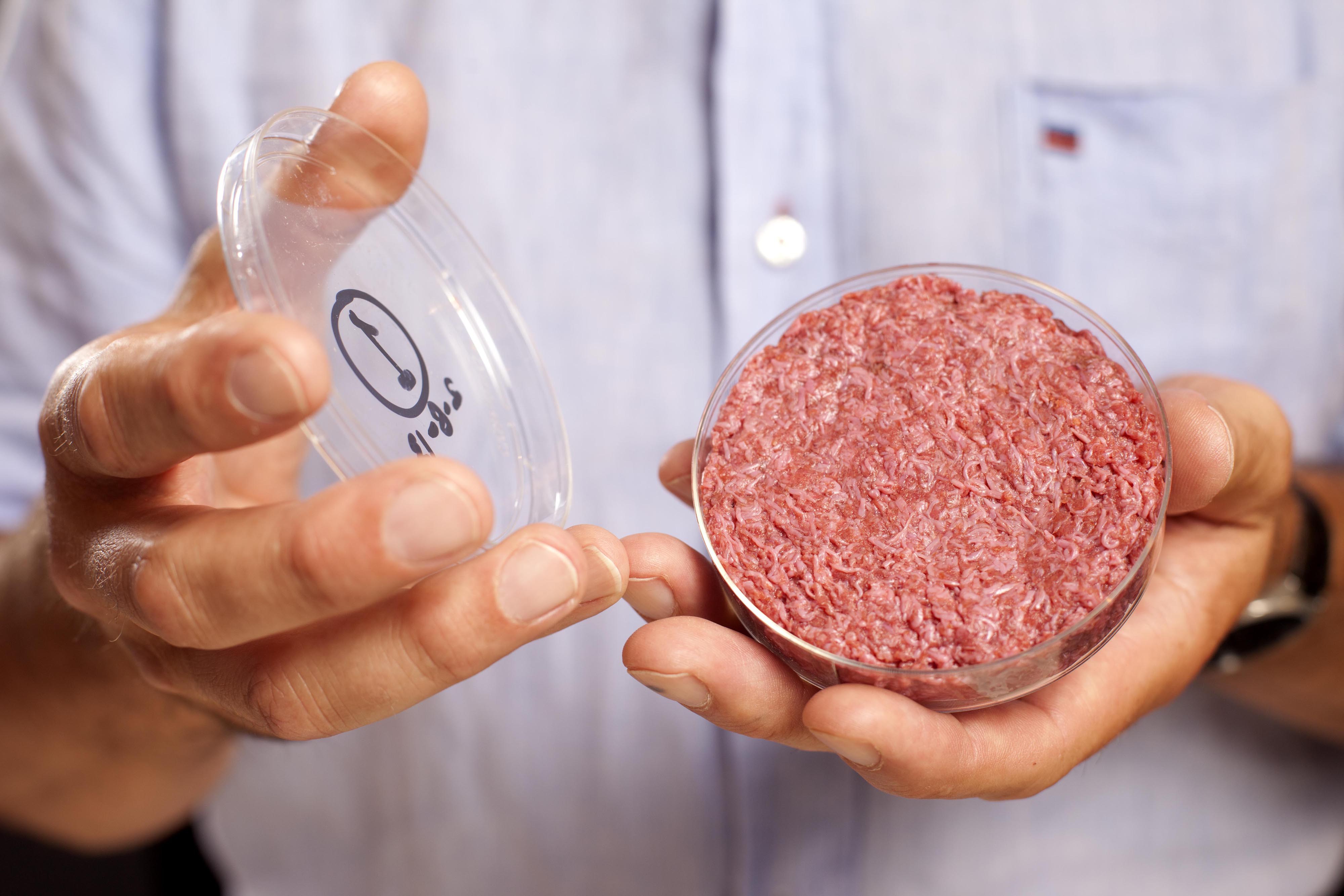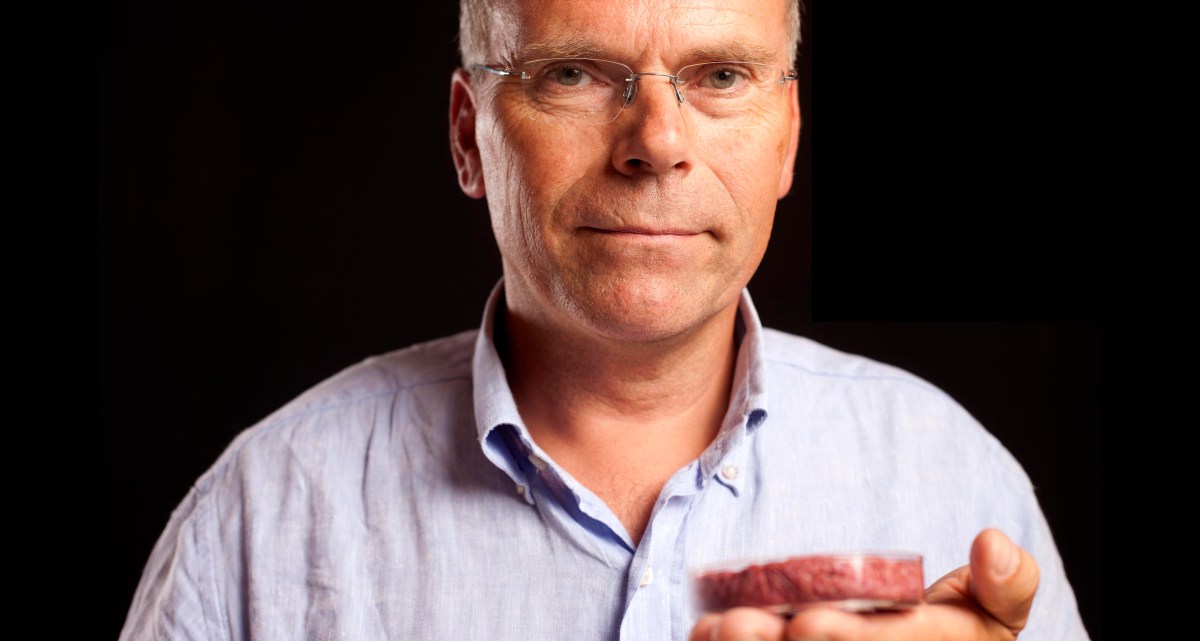In 2013, Dr. Mark Post and his team at Maastricht University in the Netherlands presented to a few lucky tasters, and a worldwide audience, a single hamburger grown in a lab from beef stem cells. While there have been many other innovative burger products coming and going over the last few years, Post’s burger had the unique claim to fame that it was made of real, pure beef—beef that had not been cut from a cow.
It was lean—made just from muscle—with added beet juice for color. While the texture was slightly below the mark, the price point was way above it, coming in at $325,000 to create the one and only such patty.
This year, Dr. Post proclaimed that, as soon as 2020, customers will be able to buy lab-grown burgers for $10 apiece.
The idea of eating lab-grown meat is still hard to wrap one’s head around. But it’s an intriguing one, particularly in light of inhumane treatment of livestock, cattle producing greenhouse gases linked to global warming, and the world’s growing population leading to food insecurity. Dr. Post recently spoke to Cook’s Science about the project.
Cook’s Science: What is the current timeline and price for the cultured burger?
Dr. Mark Post: In the face of what we still need to do—scale up, get regulatory approval, change some of the production system—in 3-4 years, it’s going to be about $10 for a hamburger. I was a little bit conservative in 2013, but in the back of my mind I thought it was not going to be 10 years, but more like 5.
CS: What might slow you down?
MP: Scaling up. It’s completely new technology. The systems that allow us to scale up are already there, but they’ve never been used for these types of cells or this type of production. The process consists of two phases. One is cell production. The technology is very similar to when you do this for bacteria or yeast: it’s a fermenting process. In this case, the products from the cells aren’t the product; the cells are the product.
The second phase is more tissue formation: you allow the cells to make tissues, and that requires automation, replacing mechanical handling [by humans with] robots. It will look a bit like a pipetting robot and automate transfer of the tissue to a maturation module, and from there [it will be] automatically harvested.

CS: Where are the stem cells coming from? Can they be taken from any muscle tissue of the cow?
MP: They come from an adult cow. It doesn’t matter [what part of the body they come from] in terms of efficiency. Whether it matters in terms of taste or structure of the muscle fibers, we don’t know that yet.
CS: What is the current timeline from stem cell to edible meat?
MP: It’s more [about] capacity. It takes 3 months to grow 1 hamburger. Because every cell doubling takes approximately 1 day, then it takes 3 months and a day to grow 2 hamburgers, and 3 months plus 2 days to grow 4 hamburgers. It’s an exponential process. I also say 3 months, because now we grow fat tissue [separately, for added flavor and texture], and fat tissue takes a little longer than muscle tissue.
CS: The 2013 cultured burger was made with an animal-derived growth medium, fetal bovine serum, that provided nutrients to the cells. Will the burger that comes to market be made totally without animal inputs?
MP: The two components you require for tissue formation are feed for the cells: vitamins, minerals, amino acids, sugars, that sort of thing. And then, there is also a blood component to make the cells happy. That, we want to get rid of. We have achieved cell cultures in the absence of serum [one component of blood], so it can be done, but it’s not quite as efficient yet. We want to [try using photosynthetic algae and cyanobacteria] not only as a source for amino acids and sugars, but perhaps also as a source to replace serum.

CS: While the cells absorb their nutrients, they need to grow into three-dimensional meat. What kind of scaffolding is used to allow them to do that?
MP: This process for a hamburger relies on self-organization of the cells. Meaning, we put them in a soft gel and let them find each other, align, start to attach to each other, start to contract, and start to produce a fiber. The cells bind to components of the gel and start to ‘contract’ the gel, so that the cells come close until they are attaching to each other, thus forming a tissue. The gel we are currently using is what we call a functionalized alginate, with small peptides [amino acid chains] the cell can attach to.
CS: Is the muscle being exercised while it grows?
MP: They already exercise themselves. It’s kind of weird to see—but [the fibers] start contracting even if there is no particular reason and no one is telling them that they should. We are still thinking of some level of [exercise] to speed up the process of cell maturation.
CS: In 2013, you added beet juice to make the burger more red. Is that still happening?
The color of meat comes from a protein called myoglobin: it turns red in the presence of oxygen and it turns blue in the absence of oxygen. When we were culturing our cells in a conventional way—they were exposed to the regular air that we are breathing—they don’t express this protein very much, so that makes the cells yellow. We have not looked into the mechanism, but there are many signalling pathways in the cell that respond to oxygen levels. So what we started to do is culture our cells under lower oxygen conditions, and they start to express this myoglobin. And they turn nicely pink. It’s a pretty simple intervention that can now make cells that have their natural color, and the natural nutritional value of heme iron.
CS: Do you know when the next burger tasting will be?
MP: I hope it’s going to be in the next year and a half, a scientific tasting with a panel and blind tasting.
This interview has been edited and condensed.
Photography by David Parry/PA




